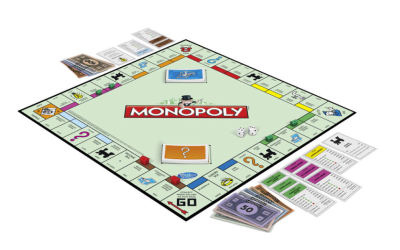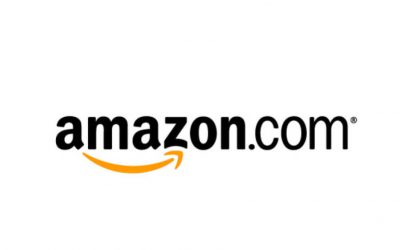In 2015, Dyson acquired Sakti3, a startup specializing in solid-state battery power. Dyson’s acquisition of Sakti3 is a perfect example of a vertical merger, whereas Dyson bought the capabilities to advance its product portfolio with cordless vacuums.
At the time of the deal, Dyson was a dominant force in the marketplace, so it is a good thing that Lina Khan wasn’t Chair of the FTC back then (she had yet to graduate law school). Ever since being appointed by President Joe Biden, Khan has demonstrated her clear desire to deter any activity related to big business or corporate consolidation. And the FTC’s intent to update the 2020 Vertical Merger Guidelines along with the 2010 Horizontal Merger Guidelines is an obvious sign of the government’s goal to further its oversight over market mechanisms.
Dyson’s merger would have definitely received pushback in relation to the agency’s newly proposed guidelines, and Khan would have referenced how “mergers should not entrench or extend a dominant position.” So, with this in mind, let’s illustrate what is meant by the different merger types, while touching upon some of Khan’s cases, and elucidate why the FTC is wrong to think it can predict business outcomes.
Vertical Integration
A vertical merger occurs when a firm acquires the assets and competencies of another firm within or adjacent to an industry’s supply chain. A soft-drink company, for example, may acquire a bottling plant, or a retail company may purchase a warehouse facility. It should also be pointed out that whatever makes up a firm’s supply chain may change and evolve over time. This was certainly the case for Dyson and the adoption of battery-powered components.
Mergers and acquisitions of this type allow businesses to improve or extend product offerings and obtain greater control over operations and output. Accordingly, consumers can benefit from vertical mergers by means of better products, lower prices, or both.
An example of a vertical merger that Khan felt necessary to intervene in, despite the rest of the agency’s reservations for doing so, was the Meta-Within transaction. Meta sought to acquire Within Unlimited, a Virtual Reality fitness app, rather than develop a fitness product in-house. Meta’s interest in the startup’s product was obvious given that all things VR-related may be of use for the Metaverse. What is not obvious is why Khan wanted to stop a small startup from benefitting from a big buyout, or how a fitness app acquisition would be a detriment to consumer interests. Khan’s interference further exposed her bias against Big Tech and Meta’s merger was an embarrassing loss for FTC.
Nevertheless, Khan sought to block another vertical merger just a few months later when Microsoft’s Xbox Game Studios announced plans to acquire the game developer Activision-Blizzard. Once again, Khan’s case lacked substance and reason since the merger would benefit gamers and help Microsoft better compete against Japan’s Sony Interactive Entertainment Studios, which holds 70 percent market share.
The delays and unnecessary expense Khan has caused with these cases are not only problematic for the parties involved, but also for taxpayer dollars and consumer interests. Yet, Khan shows no signs of backing off with her sights now set on Amazon, and she has requested an increase of $160 million for her FY 2024 budget.
Moving on.
Horizontal Integration
An excellent example of a horizontal merger receiving heat from the FTC is that of Cincinnati-based Kroger and Idaho native, Albertsons.
Horizontal mergers occur when two firms sharing a common industry come together, and Kroger as well as Albertsons are both well established in the grocery sales sector. These types of mergers enable firms to increase reach, in relation to consumers, or to scale product offerings and increase operational efficiencies. For instance, a restaurant owner may acquire another local restaurant to not only obtain a larger customer base but also to further opportunities for cross-subsidization and resource allocation.
Horizontal mergers also increase opportunities for leveraging scale economies for both production and marketing purposes. A simple example being that a paid-for advertisement can be applicable to more than one offer or location.
Antitrust concerns, however, typically arise when horizontal mergers are proposed and the guideline stating that “mergers should not further a trend toward concentration” is a primary foundation for Khan’s qualms with Kroger and Albertsons.
In fact, a divestiture of stores must occur for the Kroger-Albertsons merger to move forward but the selling off of stores seems counterintuitive if to consider the big picture. Yes, Kroger and Albertsons have a substantial footprint regarding store sites, but their locations pale in comparison to the likes of Walmart’s retail units, even when combined. Walmart simply can’t be beat right now when it comes to grocery sales, and the FTC’s pressure for the divestiture from Kroger further aids the entrenchment of Walmart’s dominant status.
Fortunately for Kroger, the rationale for the merger isn’t merely for store expansion but rather for expanding product offerings. Albertsons has established networks and notoriety in the pharmaceutical realm, and Kroger has a strong interest in providing healthcare products. As such, this grocery store duo could be vying to take on Walgreens more so than Walmart. And, according to details from the deal, Kroger is looking to enhance its omnichannel capabilities and leverage scale economies for lowering prices for consumers.
The joining of Kroger and Albertsons actually increases competitive pressures for various industry leaders, as well as generates greater offerings for consumers. FTC interference is therefore confusing and could be unnecessarily costly if Kroger were to be forced to litigate its case since favor would likely fall with Kroger rather than Khan via the court system.
FTC’s Flawed Fixation
M&As can be instrumental for organizational efficiency, improving product and service offerings, and leveraging networks and resources. However, this does not mean that M&As are risk free or easy. Such transactions require great deliberation and determination given that the failure rate for M&As is as high as 70 to 90 percent. At those odds, the FTC’s time along with our tax dollars could be saved by just waiting and seeing.
Microsoft has had several embarrassing acquisitions that didn’t pan out as planned, and Google’s purchase of Nest proves that even the biggest firms can botch a business transaction. And Amazon, another company Khan loves to hate, has found little success with its acquisition of Whole Foods (once again, no one can match Walmart). It is perhaps worth noting that Whole Foods would have never found its fame had it not been for the initial merger of Safer Way Natural Foods and Clarksville Natural Grocer, which then resulted in a slew of subsequent acquisitions of natural food stores across the United States.
Inevitably, there will always be uncertainty for businesses partaking in M&A deals and, as such, there is no way for Khan and her colleagues to accurately predict how corporate power will play out over time. A classic example of a megamerger that failed to pay off, which Khan could learn from, was when AOL acquired Time Warner in 2001. The merger was the largest consolidation of corporations that had ever occurred, and AOL Time Warner was poised to have control of mass media and internet activity. However, what the corporate executives didn’t see coming was the dotcom bubble burst of 2002, let alone their own inability to manage a massive media conglomerate.
Success is never guaranteed in a market economy, and business failure is not uncommon for industry leaders. Blockbuster and Kodak had near monopolistic status in their respective sectors but that couldn’t save them from tech innovations that took them down. Moreover, there is no way to fully know what the market will accept or reject over time. The Segway was “one of the most famous and anticipated product introductions of all time” and it was expected to be bigger than the PC, but clearly expectations didn’t match reality.
If those with vested interests and investments can’t perfectly predict how a merger will perform, why does Khan think she can. Khan has asserted proudly her plans to further deter and delay M&As and we must all wonder at what cost. I for one would be devastated if my cordless Dyson was never given the chance, and I wonder what other innovations or advancements may now be lost thanks to a true monopoly obstructing competition in the marketplace – the FTC.
Made available by the American Institute for Economic Research.




